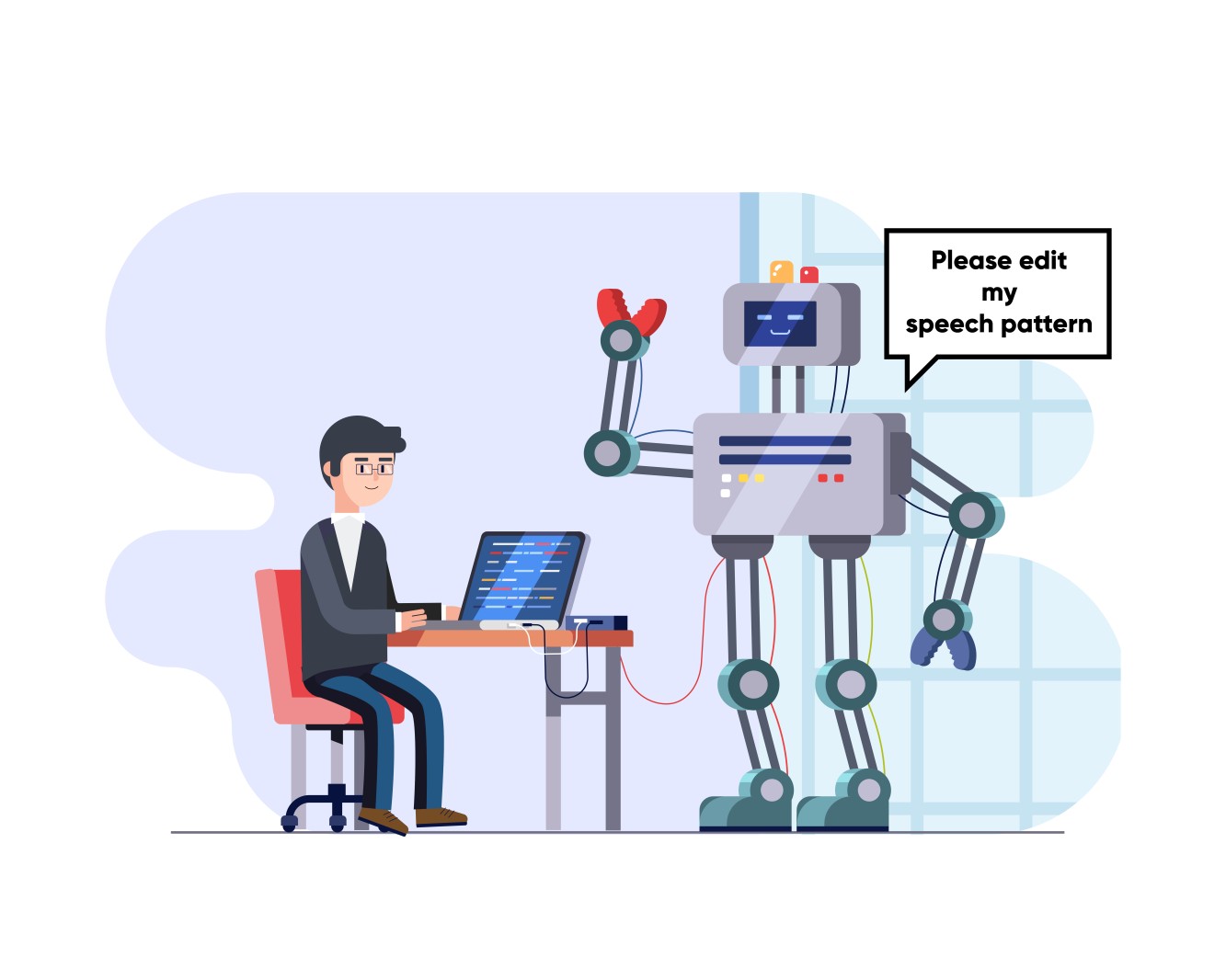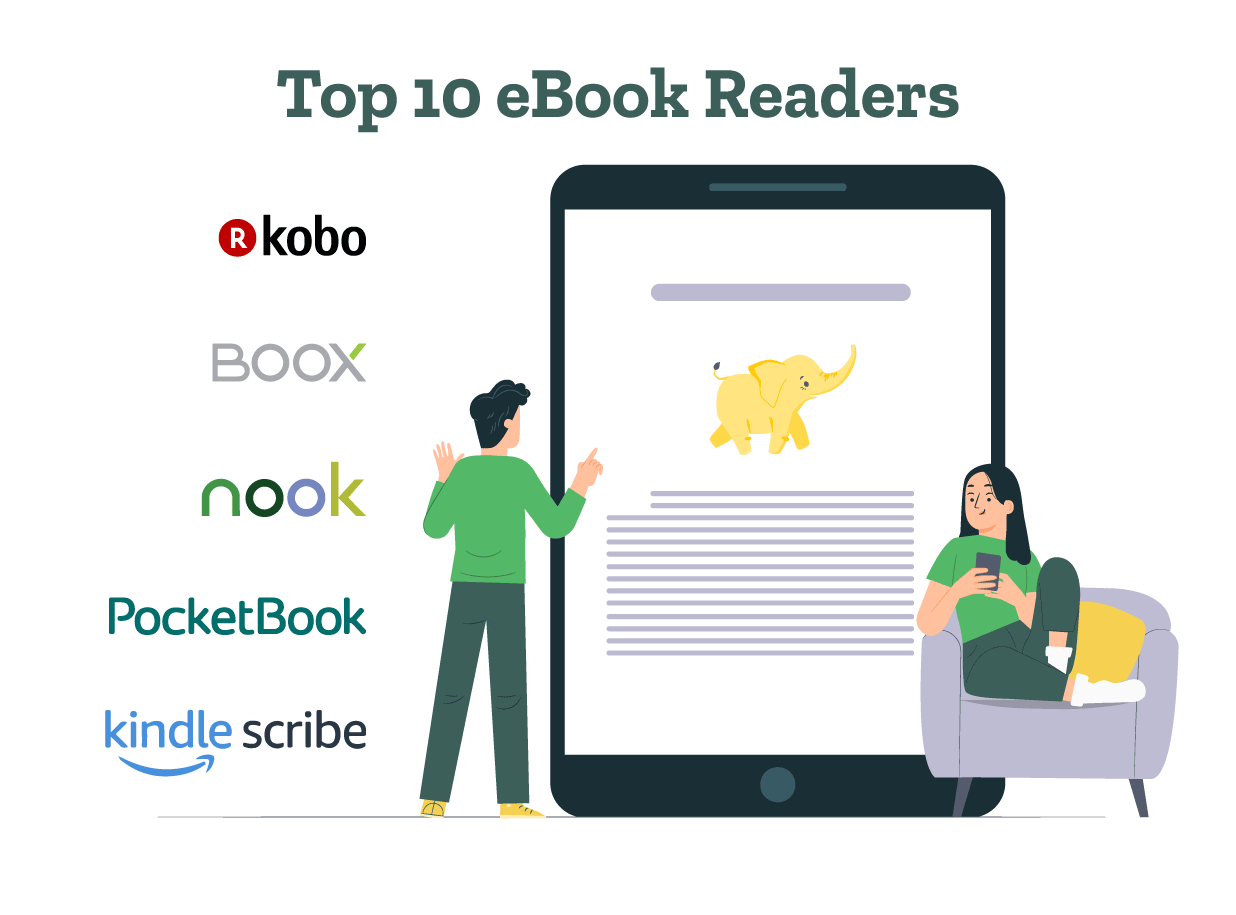- Tips to Self-Edit Your Dissertation
- Guide to Essay Editing: Methods, Tips, & Examples
- Journal Article Proofreading: Process, Cost, & Checklist
- The A–Z of Dissertation Editing: Standard Rates & Involved Steps
- Research Paper Editing | Guide to a Perfect Research Paper
- Dissertation Proofreading | Definition & Standard Rates
- Thesis Proofreading | Definition, Importance & Standard Pricing
- Research Paper Proofreading | Definition & Standard Rates
- Essay Proofreading | Options, Cost & Checklist
- Top 10 Paper Editing Services of 2024 (Costs & Features)
- Top 10 Essay Checkers in 2024 (Free & Paid)
- Top 10 AI Proofreaders to Perfect Your Writing in 2024
- Top 10 English Correctors to Perfect Your Text in 2024
- 10 Advanced AI Text Editors to Transform Writing in 2024
- Personal Statement Editing Services: Craft a Winning Essay
- Top 10 Academic Proofreading Services & How They Help
- College Essay Review: A Step-by-Step Guide (With Examples)
- Top 10 College Essay Review Services: Pricing and Benefits
- How to Edit a College Admission Essay (8-Step Guide)
- Improve Academic Writing: Types, Tips, Examples, Services
- How to Use AI to Write Research Papers: A Step-by-Step Guide
- How to Write an Assignment: A Step-by-Step Guide for Students
- AI Proofreading Services: Meaning, Benefits & Best Tools
- 10 Best Proofreading Services Online for All in 2025
- Top 10 Recommendation Letter Editing Services | Best Picks
- How to Format an Appendix: APA and MLA
- Top 10 Online Thesis Editing and Proofreading Services
- What is Academic Editing? Meaning, Types & Importance
- Research Paper Outline: Free Templates & Examples to Guide You
- How to Write a Research Paper: A Step-by-Step Guide
- How to Write a Lab Report: Examples from Academic Editors
- Research Methodology Guide: Writing Tips, Types, & Examples
- The 10 Best Essential Resources for Academic Research
- 100+ Useful ChatGPT Prompts for Thesis Writing in 2024
- Best ChatGPT Prompts for Academic Writing (100+ Prompts!)
- Sampling Methods Guide: Types, Strategies, and Examples
- Independent vs. Dependent Variables | Meaning & Examples
- Understanding Verbatim Plagiarism: Copy, Paste, Regret
- What Is a Journal Article and How to Write a Journal Article
- How to Use AI to Write Research Papers: A Step-by-Step Guide
- Top 10 AI Tools for Research in 2025 (Fast & Efficient!)
- What Is a Research Proposal: A Detailed Guide
- How to Format an Appendix: APA and MLA
- What Is an Appendix In a Paper?
- Types of Journals in Research and Their Features
- Difference Between Paper Editing and Peer Review
- How to Handle Journal Rejection: Essential Tips
- Editing and Proofreading Academic Papers: A Short Guide
- How to Carry Out Secondary Research
- The Results Section of a Dissertation
- Final Checklist: Is My Article Ready for Submitting to Journals?
- Types of Research Articles to Boost Your Research Profile
- How does LaTeX based proofreading work?
- How to Improve Your Scientific Writing: A Short Guide
- Chicago Title, Cover Page & Body | Paper Format Guidelines
- How to Write a Thesis Statement: Examples & Tips
- Chicago Style Citation: Quick Guide & Examples
- Research Paper Outline: Free Templates & Examples to Guide You
- The A-Z Of Publishing Your Article in A Journal
- What is Journal Article Editing? 3 Reasons You Need It
- How to Cite a Book in APA Style | Format & Examples
- How to Start a Research Paper | Step-by-step Guide
- APA Citations Made Easy with Our Concise Guide for 2024
- A Step-by-Step Guide to APA Formatting Style (7th Edition)
- Academic Writing in 2024: 5 Key Dos & Don’ts + Examples
- How to Write a Lab Report: Examples from Academic Editors
- What Are the Standard Book Sizes for Publishing Your Book?
- MLA Works Cited Page: Quick Tips & Examples
- 2024’s Top 10 Thesis Statement Generators (Free Included!)
- Top 10 Title Page Generators for Students in 2024
- What Is an Open Access Journal? 10 Myths Busted!
- Primary vs. Secondary Sources: Definition, Types & Examples
- How To Write a College Admissions Essay That Stands Out
- APA Journal Citation: 7 Types, In-Text Rules, & Examples
- What Is Predatory Publishing and How to Avoid It!
- Independent vs. Dependent Variables | Meaning & Examples
- How to Write a Strong Dissertation & Thesis Introduction
- How to Cite a Book in MLA Format (9th Edition)
- How to Cite a Website in MLA Format | 9th Edition Rules
- 10 Best AI Conclusion Generators (Features & Pricing)
- Top 10 Academic Editing Services of 2024 [with Pricing]
- 100+ Writing Prompts for College Students (10+ Categories!)
- How to Create the Perfect Thesis Title Page in 2024
- What Is Accidental Plagiarism & 9 Prevention Strategies
- What Is Self-Plagiarism? (+ 7 Prevention Strategies!)
- Understanding Verbatim Plagiarism: Copy, Paste, Regret
- Improve Academic Writing: Types, Tips, Examples, Services
- What Is a Journal Article and How to Write a Journal Article
- What Is Paraphrasing Plagiarism and How to Avoid It
- What Is Expository Writing? Types, Examples, & 10 Tips
- Academic Research Ethics & Rules Simplified for All
- Complete Guide to MLA 9th Format
- Top 10 Online Dissertation Editing Services of 2025
- What Is Plagiarism? Meaning, Types & Examples
- How to Write a Dissertation & Thesis Conclusion (+ Examples)
- What Is a Peer Review & 8 Types of Peer Review Processes
- 50 Best Essay Prompts for College Students in 2025
- What Is an Annotated Bibliography & Writing One Using AI
- What Is an Appendix In a Paper?
- Types of Journals in Research and Their Features
- 5 Effective Personal Statement Examples & Templates
- Preventing Plagiarism in Your Thesis: Tips & Best Practices
- Final Submission Checklist | Dissertation & Thesis
- 7 Useful MS Word Formatting Tips for Dissertation Writing
- How to Write a MEAL Paragraph: Writing Plan Explained in Detail
- How does LaTeX based proofreading work?
- Em Dash vs. En Dash vs. Hyphen: When to Use Which
- 2024’s Top 10 Self-Help Books for Better Living
- Top 10 Paper Editing Services of 2024 (Costs & Features)
- Top 10 AI Proofreaders to Perfect Your Writing in 2024
- 100+ Useful ChatGPT Prompts for Thesis Writing in 2024
- Best ChatGPT Prompts for Academic Writing (100+ Prompts!)
- MLA Works Cited Page: Quick Tips & Examples
- 2024’s Top 10 Thesis Statement Generators (Free Included!)
- Top 10 Title Page Generators for Students in 2024
- 10 Advanced AI Text Editors to Transform Writing in 2024
- Top 10 Academic Editing Services of 2024 [with Pricing]
- Know Everything About How to Make an Audiobook
- How to Create the Perfect Thesis Title Page in 2024
- Top 10 Academic Proofreading Services & How They Help
- Mastering Metaphors: Definition, Types, and Examples
- 10 Best Paid & Free Citation Generators (Features & Costs)
- What Is Plagiarism? Meaning, Types & Examples
- The 10 Best Free Character and Word Counters of 2025
- What Is an Annotated Bibliography & Writing One Using AI
- Citing References: APA, MLA, and Chicago
- How to Cite Sources in the MLA Format
- MLA Citation Examples: Cite Essays, Websites, Movies & More
- Chicago Title, Cover Page & Body | Paper Format Guidelines
- Chicago Style Citation: Quick Guide & Examples
- Citations and References: What Are They and Why They Matter
- APA Headings & Subheadings | Formatting Guidelines & Examples
- Formatting an APA Reference Page | Template & Examples
- How to Create an MLA Title Page | Format, Steps, & Examples
- How to Create an MLA Header | Format Guidelines & Examples
- MLA Annotated Bibliography | Guidelines and Examples
- APA Website Citation (7th Edition) Guide | Format & Examples
- APA Citations Made Easy with Our Concise Guide for 2024
- APA Citation Examples: The Bible, TED Talk, PPT & More
- APA Header Format: 5 Steps & Running Head Examples
- A Step-by-Step Guide to APA Formatting Style (7th Edition)
- How to Write an Abstract in MLA Format: Tips & Examples
- APA Journal Citation: 7 Types, In-Text Rules, & Examples
- 10 Best Free Plagiarism Checkers | Accurate & Reliable Tools
- How to Cite a Book in MLA Format (9th Edition)
- How to Cite a Website in MLA Format | 9th Edition Rules
- 10 Best Paid & Free Citation Generators (Features & Costs)
- Complete Guide to MLA 9th Format
- Research Paper Format: APA, MLA, & Chicago Style
- 5 Reasons Why It Is Important To Cite Your Sources
- APA Title Page Format Simplified | Examples + Free Template
- Writing a Dissertation Proposal
- The Acknowledgments Section of a Dissertation
- The Table of Contents Page of a Dissertation
- The Introduction Chapter of a Dissertation
- Tips to Self-Edit Your Dissertation
- The Results Section of a Dissertation
- Preventing Plagiarism in Your Thesis: Tips & Best Practices
- Final Submission Checklist | Dissertation & Thesis
- The Only Dissertation Toolkit You’ll Ever Need!
- 7 Useful MS Word Formatting Tips for Dissertation Writing
- 5 Thesis Writing Tips for Master Procrastinators
- The 5 Things to Look for in a Dissertation Editing Service
- Top 10 Dissertation Editing & Proofreading Services
- Why is it important to add references to your thesis?
- Thesis Editing | Definition, Scope & Standard Rates
- Expert Formatting Tips on MS Word for Dissertations
- A 7-Step Guide on How to Choose a Dissertation Topic
- 350 Best Dissertation Topic Ideas for All Streams in 2024
- A Guide on How to Write an Abstract for a Research Paper
- Dissertation Defense: What to Expect and How to Prepare
- Creating a Dissertation Title Page (Examples & Templates)
- Top 10 Online Dissertation Editing Services of 2025
- A Beginner’s Guide to How to Write a Dissertation in 2025
- What Is a Research Proposal: A Detailed Guide
- How to Write a Dissertation Literature Review: Tips and Structure
- Essential Research Tips for Essay Writing
- How to Write a MEAL Paragraph: Writing Plan Explained in Detail
- How to Write a Thesis Statement: Examples & Tips
- What Is a Mind Map? Free Mind Map Templates & Examples
- How to Write an Essay Outline: Free Template & Examples
- How to Write an Essay Header: MLA and APA Essay Headers
- How to Write an Essay: 8 Simple Steps with Examples
- Expository Essay: Structure, Tips, and Examples
- Guide to Essay Editing: Methods, Tips, & Examples
- Narrative Essays: Structure, Tips, and Examples
- How to Write an Argumentative Essay (Examples Included)
- How to Write a Conclusion for an Essay (Examples Included!)
- How to Write an Impactful Personal Statement (Examples Included)
- Literary Analysis Essay: 5 Steps to a Perfect Assignment
- How to Write a Compare and Contrast Essay: Tips & Examples
- Top 10 Essay Checkers in 2024 (Free & Paid)
- 100 Best College Essay Topics & How to Pick the Perfect One!
- College Essay Format: Tips, Examples, and Free Template
- 10 Best AI Essay Outline Generators of 2024
- The Best Essay Graders of 2024 That You Can Use for Free!
- Personal Statement Editing Services: Craft a Winning Essay
- College Essay Review: A Step-by-Step Guide (With Examples)
- Top 10 Essay Editing Services of 2024
- Top 10 College Essay Review Services: Pricing and Benefits
- How to Write an Assignment: A Step-by-Step Guide for Students
- The Four Main Types of Essay | Quick Summary with Examples
- How to Write an Essay Introduction | 4 Examples & Steps
- Top 10 Free Essay Writing Tools for Students in 2025
- 10 Best AI Essay Writing Tools in 2025
- What Is an Essay? A Comprehensive Guide to Structure and Types
- How to Write a Descriptive Essay | Examples and Structure
- Structure of an Essay: 5 Tips to Write an Outstanding Essay
- Types of Introductions and Examples
Still have questions? Leave a comment

Checklist: Dissertation Proposal
Enter your email id to get the downloadable right in your inbox!

Examples: Edited Papers
Enter your email id to get the downloadable right in your inbox!
Need
Editing and
Proofreading Services?

What Is an Open Access Journal? 10 Myths Busted!
 Apr 12, 2024
Apr 12, 2024 5
min read
5
min read
One of the coolest developments in this ever-evolving world is the rise of open-access journals. But hold up—what exactly are these open-access journals, and why should they matter to all you students, professors, and researchers out there?
Buckle up as we dive into the fascinating realm of open-access publishing, uncovering the myths of open-access publishing and shedding light on the costs involved in this innovative model!
Let’s start by understanding what does an open-access journal means:
What is an open-access journal?
An open-access journal is a type of scholarly journal that makes all its content freely available to readers without any subscription fees. This model allows anyone with internet access to read, download, and distribute the published research without financial, legal, or technical barriers, apart from those inseparable from gaining access to the internet itself.
The philosophy behind open-access
The big idea behind open-access journals is all about spreading knowledge far and wide, making sure everyone has access to the latest research. This idea goes along with the big aim of pushing science and education forward by spreading information to more people and getting everyone involved in research.
Gold open-access journals: the gold standard?
When discussing open access, you may come across the term “gold open-access journal.” What is a gold open-access journal, exactly? Well, gold open-access journals are the journals where the articles are available for free right away. The author, their school, or a sponsor usually pays for this. These journals guarantee that their articles are always free to read and go through the same tough review process as regular journals.
Open-access journal cost: who pays?
One of the most debated aspects of open access is the open access journal cost. Traditionally, the reader or the reader’s institution would pay to access journal content. However, open-access journals often shift the cost burden to the authors, who may have to pay an Article Processing Charge (APC) upon acceptance of their work. This fee covers the costs of the journal article editing process, peer review, and the technology needed to host and disseminate the articles.
The spectrum of open-access journals
Hybrid open-access journals
A hybrid open-access journal offers authors the choice to make their journal articles open-access in an otherwise subscription-based journal. This model provides flexibility, allowing authors to comply with open access mandates from funders or institutions when required or choose traditional publishing otherwise.
Specialized open-access journals
The open-access model extends across disciplines, from the Open Access Journal of Sports Medicine to the Open Access Journal of Clinical Trials. Each specialized journal serves the particular needs of its research community, offering tailored platforms for sharing findings. For example, the IEEE Open Access Journal of Power and Energy provides a forum for cutting-edge research in electrical engineering.
The arts and humanities also benefit from this model, with publications like the Arts and Humanities Open Access Journal making cultural and literary research available to a broader audience. Meanwhile, an open-access philosophy journal can facilitate discussions on metaphysics, research ethics, and other philosophical inquiries without the barrier of subscription fees.
How to start an open-access journal?
If you’re thinking about starting your own open-access journal, there are a few things you’ll need to do. First, you’ll need to put together an editing team to oversee things, then set up a system for reviewing submissions and proofreading the journal articles. It’s also important to choose a sustainable financial model. Building a reputation and attracting high-quality submissions takes time, but the result can be a reputable platform for sharing academic resources.
Ten common myths about open access journals: busted!
Myth #1: Publishing my article in an elite journal is sufficient to increase readership and citation counts.
Busted: Every year, millions of authors use recognized open-access journals to cite previously published articles and to publish their articles anticipating increased readership nationwide.
But the fact is, a well-written research article including concise descriptions, authentic discussions, coherent conclusions, and accurate research metrics can eventually reach the target readers irrespective of the journal’s fame. So, centering on good research content is ideal for increasing readership, and remember, it doesn’t necessarily depend on top-tier journals.
Myth #2: Publishers add no or little value to the open-access systems.
Busted: It’s a myth that publishers add no value to the journal publishing process. But the truth is, that scholarly publishing is a complicated process, and publishers lie at the core of the peer-review process and its management workflow.
Since the peer-review process deals with numerous stages viz. proofreading, copy-editing, article linking, typesetting services, etc., Every phase has its own challenges and limitations (majorly time-taking and inducing high production costs) that publishers need to manage. So, publishers are responsible for the effective management of journal publications both financially and technically.
Myth #3: Case reports have no value.
Busted: Most of the original research is based on case reports and case series findings. It is an utter misconception that there is no value for case reports. If you have a clinically relevant unique case report that is unpublished, you can publish it for sure. That way, you are introducing a new concept to the respective industry.
Myth #4: One should give up on publication after manuscript rejection.
Busted: One should never give up on the publishing desire at the cost of manuscript rejection. There are multiple reasons to reject the manuscript. And, it is solely the journal’s editorial team who decides whether to approve or reject the manuscript.
Also, keep in mind that the journal’s rejection is certainly not the end. You can improve and edit your manuscript based on the feedback and re-submit it or approach other journals to get it published. Remember, being consistent and persevering is the key to success.
Myth #5: Indexed journals will not accept my article.
Busted: It is a common myth that most new researchers or authors believe that high-quality scientific journals (indexed journals) will reject their manuscripts. So, the best way to combat this myth would be to visit the desired journal platform and fetch all possible information on journal indexing and abstracting. It not only helps you get well-versed with their indexing policies but also enhances the manuscript quality in line with the journal guidelines.
Myth #6: Open-access journals charge exorbitant publication fees.
Busted: Publishing in open-access journals does not necessarily mean you have to make a hole in your pocket. Only about one-third of the open-access journals charge publication fees – article processing charges (APC).
Also, if the author cannot afford the publication fee, most journals reduce the publication cost through funding, sponsorships, or membership dues. If you want to self-archive the peer-reviewed manuscript instead of publishing it on open access, you can cut down on the publication fees.
Myth #7: Open-access journals are not copyrighted.
Busted: Many open-access journals allow authors to retain the copyrights of the materials. Unlike traditional publishing, the authors do not require any permission to use the research metrics or content of the article.
Besides, they allow authors to re-use the materials under Creative Commons licenses that ensure supreme visibility of the article.
Myth #8: Open-access journal helps only readers and not authors.
Busted: It is true that open-access benefits the readers by providing free access to the articles. As a result, the rate of readership increases. However, the increased readership is directly proportional to the higher citation counts, therefore boosting the impact factor.
As a result, it benefits the researchers or authors to gain credibility for their research work and helps them secure grants and funding for future projects. To sum it up, open-access models are beneficial for both the author and the readers.
Myth #9: Open-access journals are not peer-reviewed and of poor quality.
Busted: You might find non-peer-reviewed journals on the internet today. However, it depends on the journal’s policy whether to follow the peer-review process or not. But, most of the open-access journals follow a peer-review process that is similar to traditional journals. Post-approval of peer-reviewers and editors, they publish the article ensuring high quality.
Here are a few examples of credible open-access journals that ensure a high-quality article publication:
- DOAJ
- SpringerOpen
- PubMed Central
- JSTOR
- SAGE Open
- Elsevier
Myth #10: Submitting my article to open-access journals is the only way to provide open-access articles.
Busted: There are two ways to make your article digitally available. The first one is submitting to OA journals, while the other one is self-archiving or archiving your articles in digital repositories. So, the myth that publishing solely in open-access journals provides open access to your article does not hold any truth.
As explained before, you can also submit and publish your article in the journal of your choice and still make your work available online by archiving in digital repositories.
Archiving articles in a digital repository is the publishing standard that every author or publisher should follow to preserve the content for the long term. To simplify the archiving process and store rich metadata, JATS XML is in practice.
Open-access journals are changing how academic publishing works, making it easier for everyone to access knowledge. To make sure your research stands out in these journals, it’s crucial to have it expertly edited and proofread.
With PaperTrue’s professional editing and proofreading services, your work will shine, helping you make a real impact in the world of open-access publishing!
Here are some other articles you might find useful:






